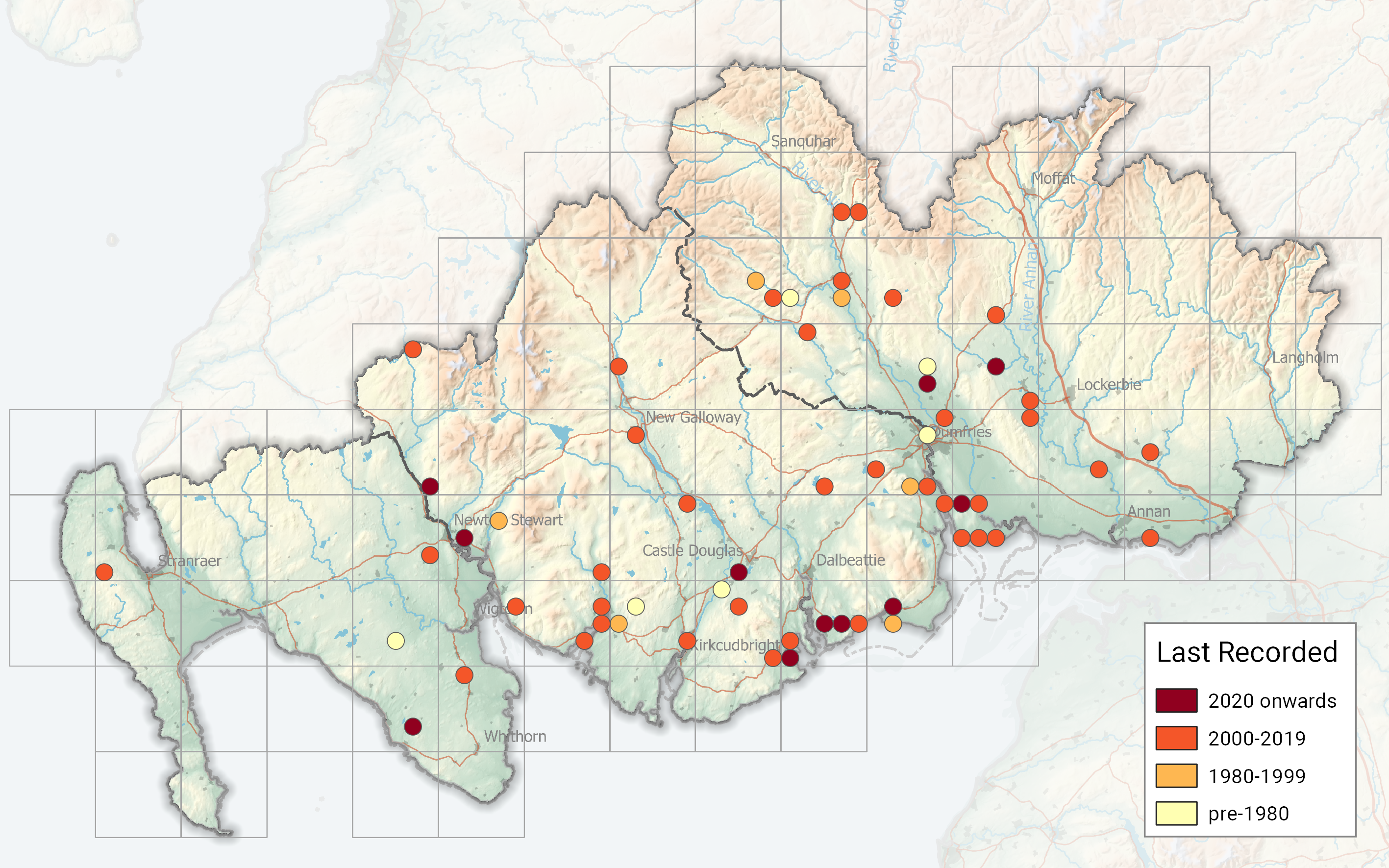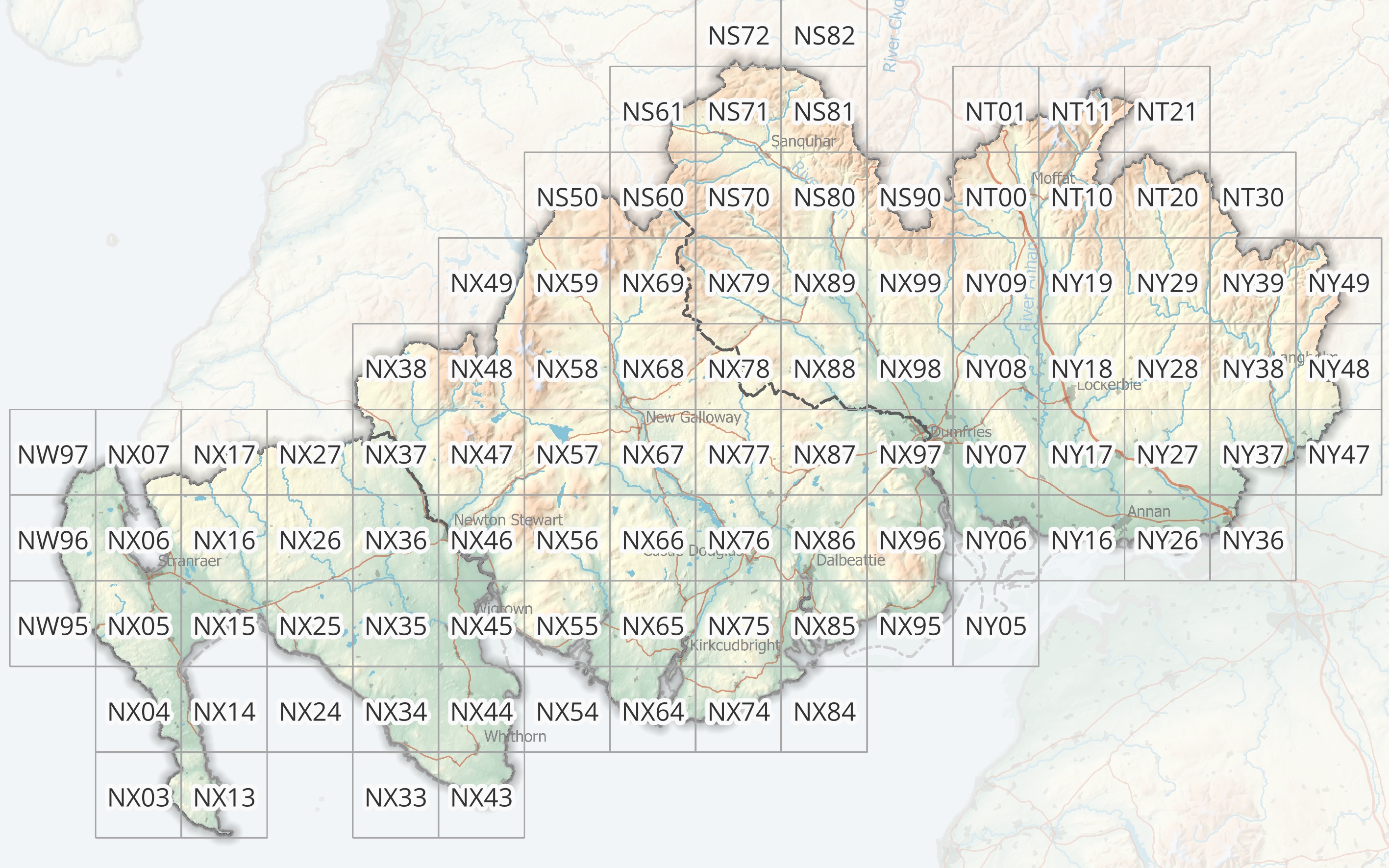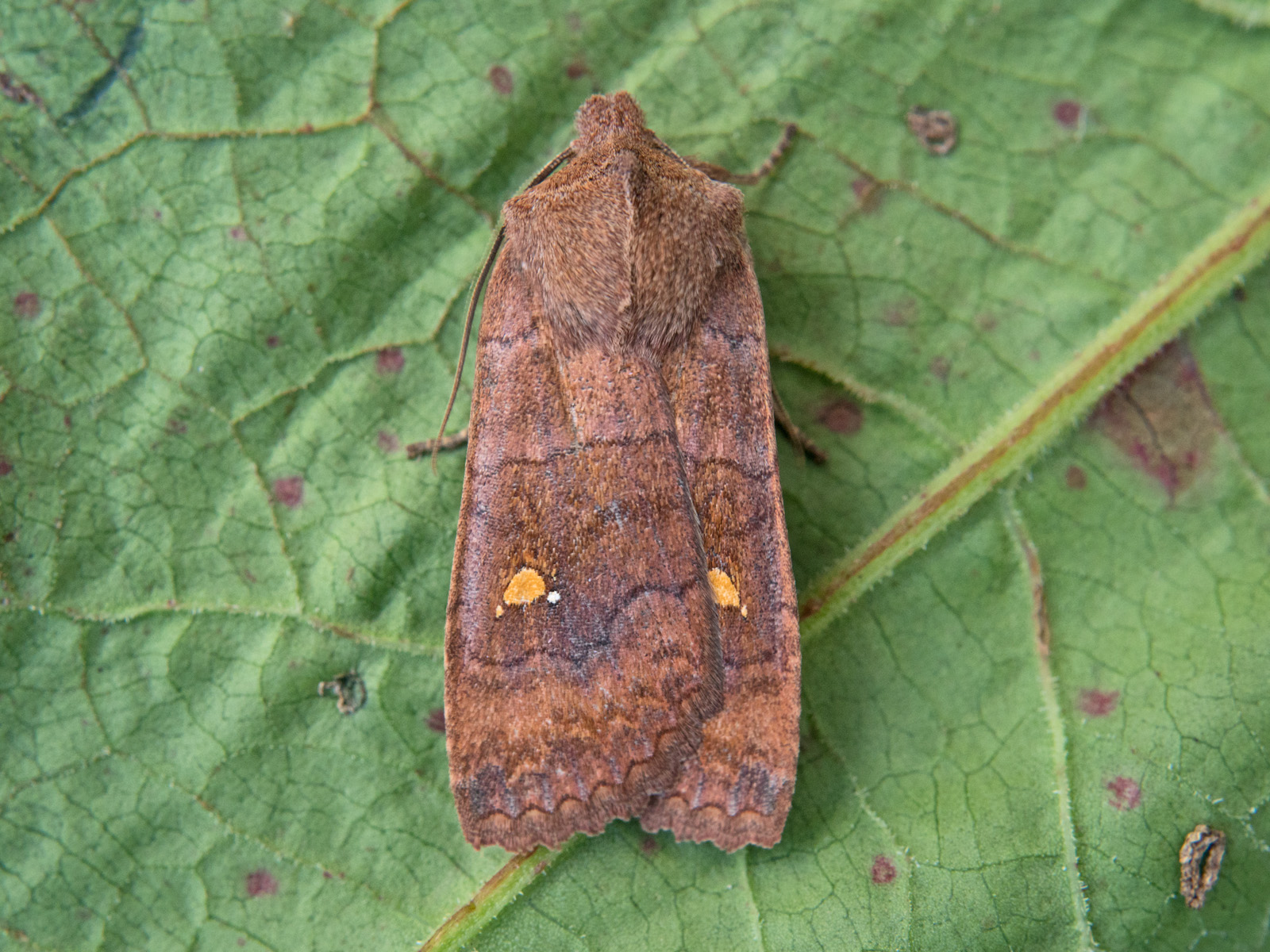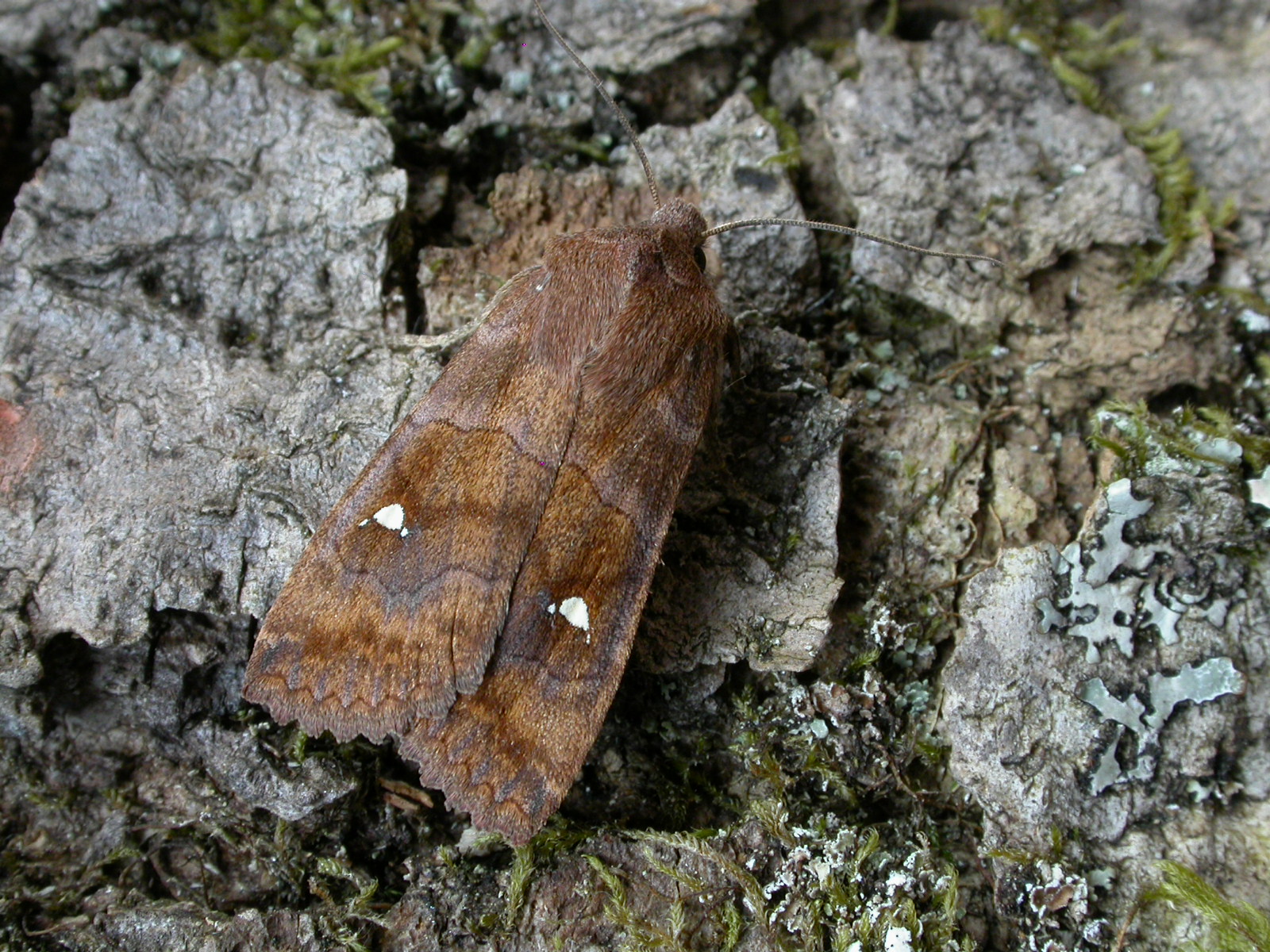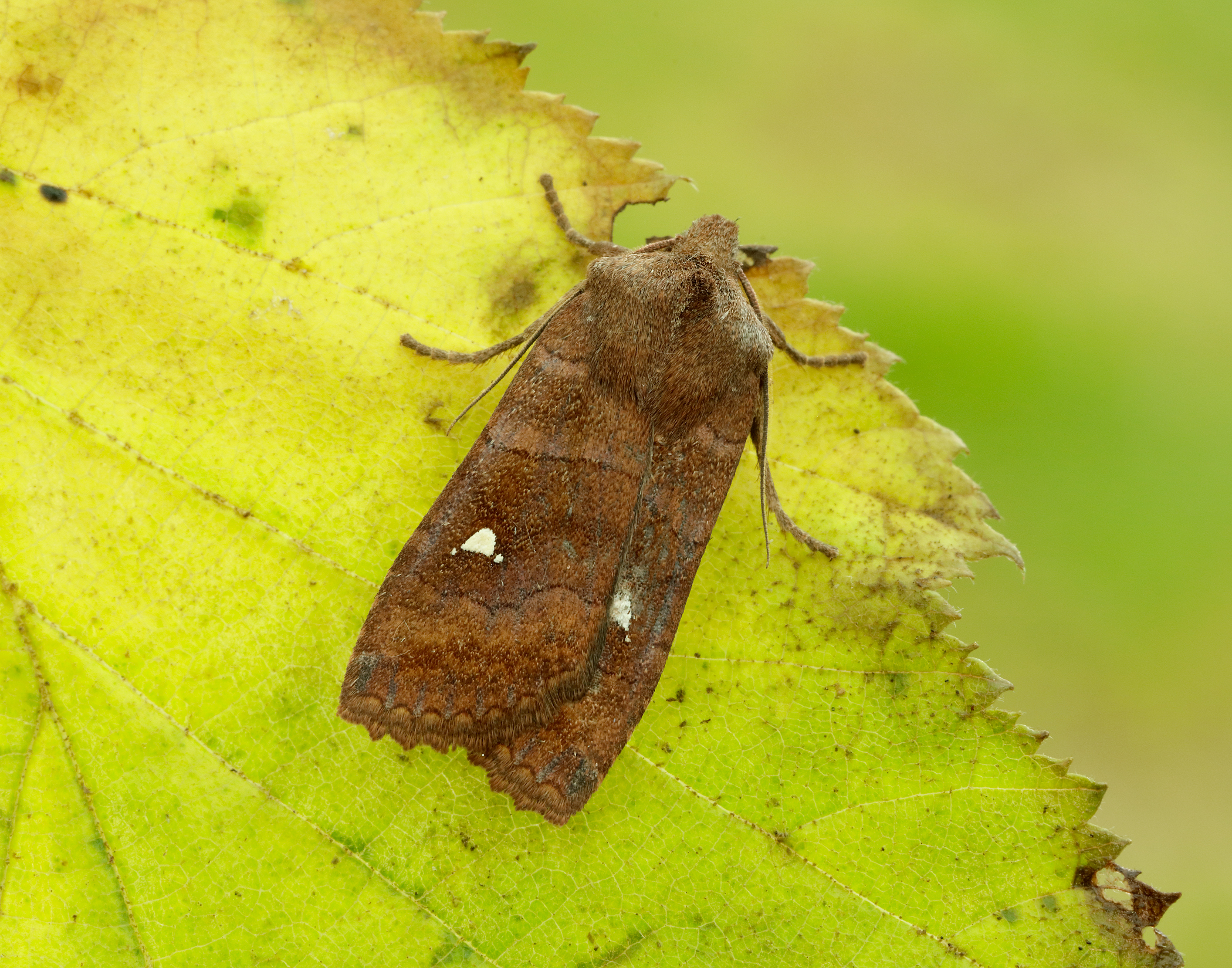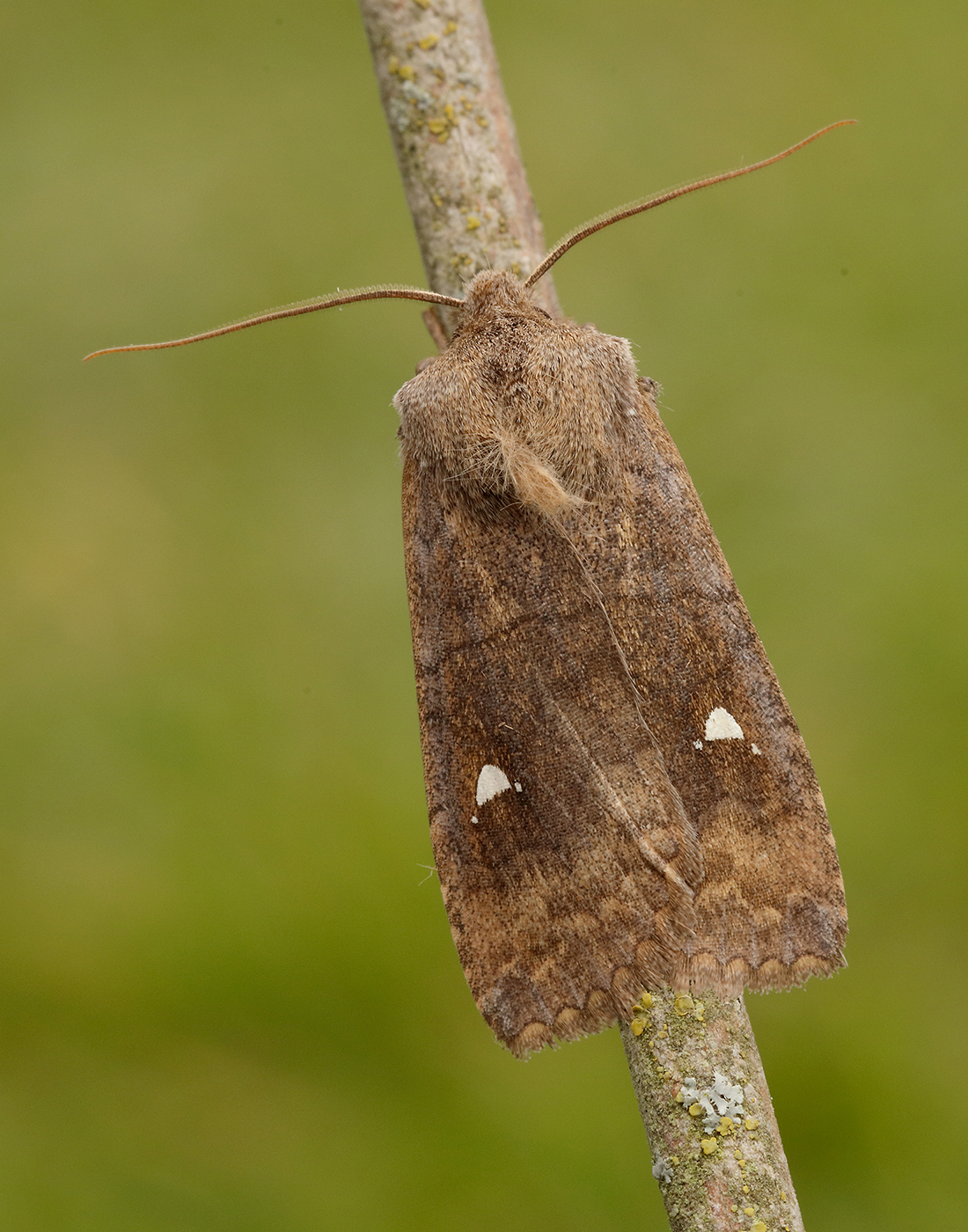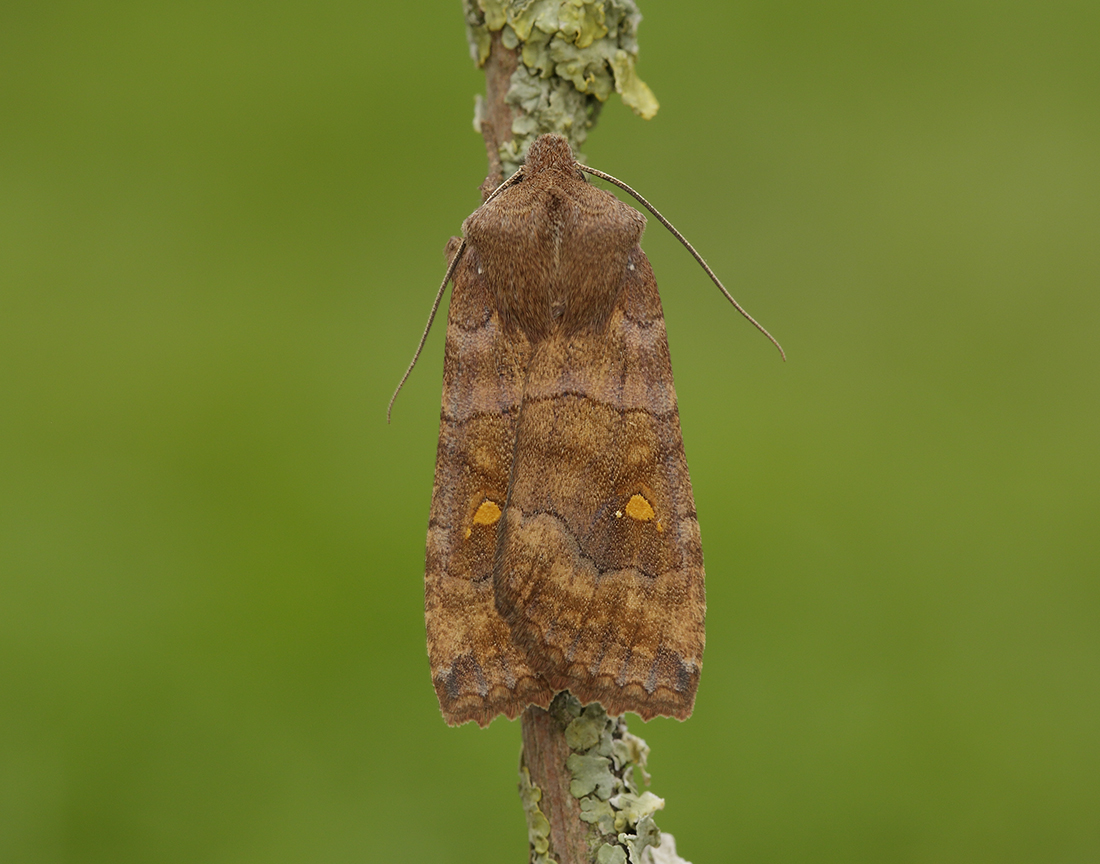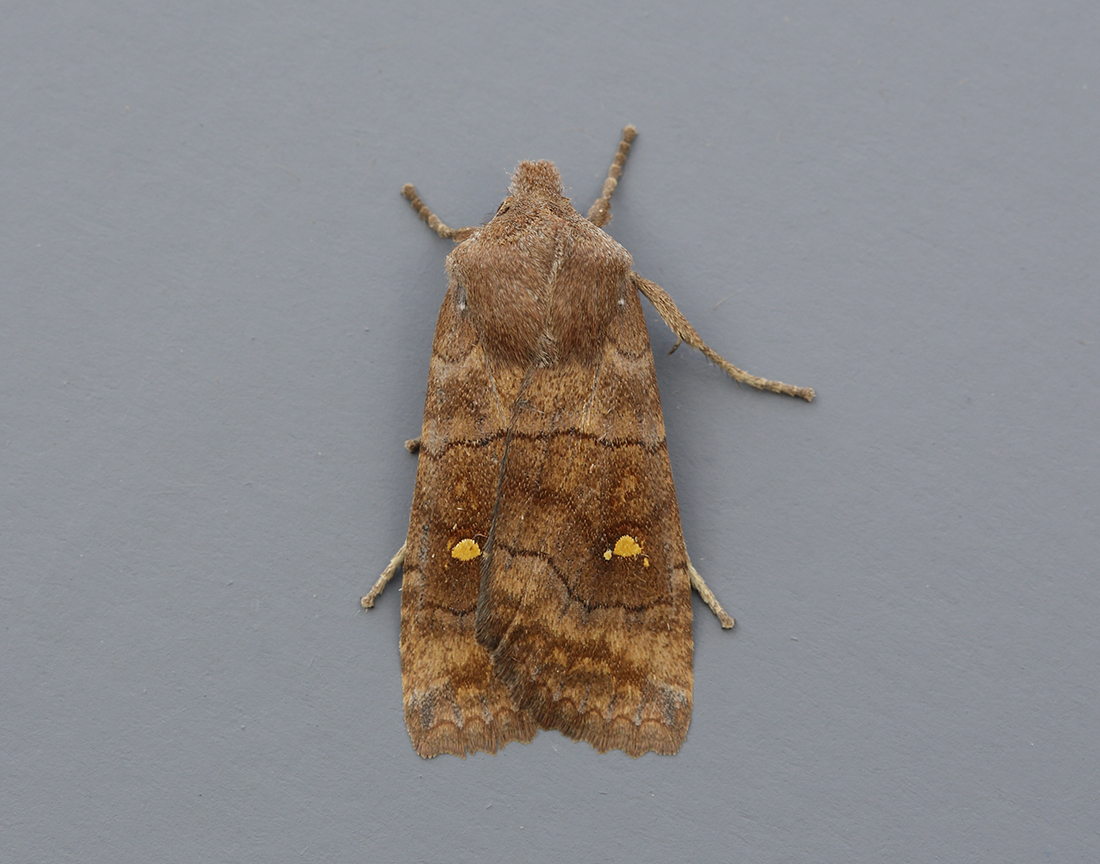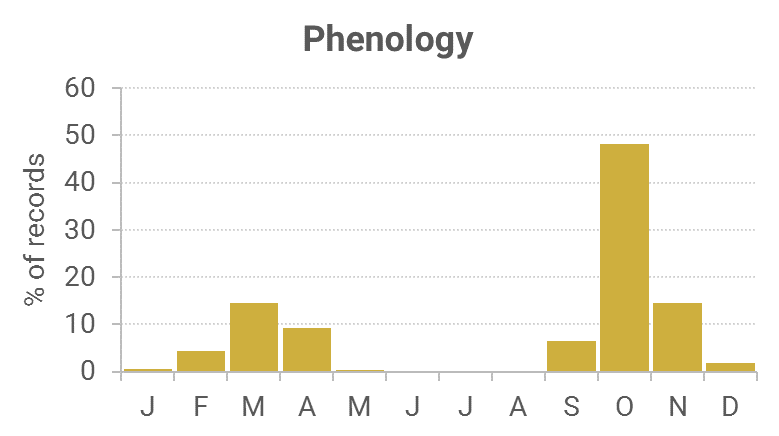See also Moth of the Week (27/10/2019)
Identification
Unmistakable with the small kidney mark and its two satellites in each bottom corner, usually whitish or orange-brown.
Recording Method.
Attracted to light, also comes to sugar and flowers.
Life cycle
One generation. Mid September to late April. Overwinters as an adult, being active in mild weather. Larvae are present April to June, hiding by day and feeding at night. It builds a cocoon underground from where it pupates about three months later.
Larval foodplants
Omnivorous. Larvae feed on leaves of oaks, elms, Hawthorn, Blackthorn and Hazel at first, but after it has grown, wit will prey on other moth larvae.
Habitat
Gardens, broadleaved woodland and moorland. Can be found at flowering Ivy and Guelder Rose.
History
Lennon (1863) had stated it to be common everywhere around the Dumfries area. Gordon (1913) had found it to be common, having found it at sugar on 7th October 1897, ivy blossom on 9th October 1897, birch sap on 20th March 1906 and sallow on 3rd April 1897, all around the Corsemalzie area, Wigtownshire. Additional to MOGBI for VC74.
Sir Arthur Duncan (1909-84) during his lifetime had found it at Closeburn, Tynron and Castlehill, Dumfries (all VC72). Archibald Russell (1944) listed it as occurring near Gatehouse of Fleet (VC73) during the years 1942-43.
During 1974-90 there were 135 records from Gatehouse of Fleet, Bridge of Dee, Mabie Forest (VC73) and Waterside Mains at Keir, Rothamsted stations.
From 1992 to 2010 the regular trapped sites at Kirkton and Cally Woods, and to a lesser extent Durisdeer, Castle Loch, Lochmaben, Forest Moor (VC74) and Old Torr, with a few others from scattered sites across VCs 72 and 73.

